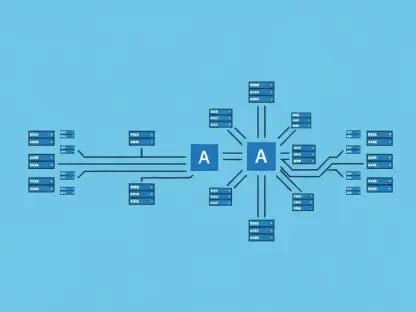In a significant move to enhance the cybersecurity posture of the nation’s electric infrastructure, the U.S. Federal Energy Regulatory Commission (FERC) has introduced a new reliability standard known as CIP-015-1 through Order No. 907. This regulation mandates Internal Network Security Monitoring (INSM) for specific bulk electric systems, aiming to ensure their resilience against an increasing array of cyber threats. The crucial directive targets selected entities, primarily those encompassing certain Bulk Electric System (BES) Cyber Systems situated within defined electronic security perimeters. These perimeters serve as protective boundaries to secure interconnected devices vital to the BES. By instituting stringent monitoring and responsive measures to detect network anomalies, the regulation seeks to safeguard these systems from unauthorized intrusions and data breaches, while necessitating the retention of related data for investigatory purposes. The requirement underscores the importance of a proactive cybersecurity framework as the national grid transitions into more complex and interconnected systems.
Phased Implementation and Core Requirements
The CIP-015-1 reliability standard specifically addresses medium-impact BES Cyber Systems that possess external connectivity and mandates it for all high-impact systems. This directive involves three primary requirements, including anomaly detection and response, the retention of INSM data for investigative needs, and implementing comprehensive data protection strategies. One of the significant compliance elements stipulated by FERC involves the preservation of evidence or pertinent data for no less than three years. This stipulation ensures thorough investigations and a prompt response to potential security incidents or breaches. An integral aspect of this regulation is its phased implementation plan. The requirements are set to fully come into force 36 months following the order’s effective date, compelling control centers tasked with real-time monitoring of BES to comply initially by September 2, 2025. All other affected entities are accorded an additional timeline of 24 months to align with the stipulated standards, an acknowledgment of the need for a measured and strategic roll-out across the industry. This staggered approach highlights FERC’s understanding of the complexities involved in adopting comprehensive cybersecurity measures across varying organizational structures and technical capacities.
Broadened Scope and Industry Implications
A significant aspect of the order is the clarification of “CIP-networked environments,” which extends to include electronic and physical access control systems situated beyond the perimeters of the BES. This broader scope underscores FERC’s intention to fill existing security and reliability gaps, bridging connections among Electronic Access Control and Monitoring Systems (EACMS) and Physical Access Control Systems (PACS). FERC’s directive to the North American Electric Reliability Corporation (NERC) includes proposing revisions to further extend INSM requirements to these encompassing systems within a year of the order’s issuance. Integrating these facets into the cybersecurity framework aligns with the reality that the modern electric grid is increasingly interwoven with complex cyber systems requiring robust protection. The broadened mandate recognizes the dynamically evolving nature of cybersecurity, where threats become more sophisticated over time. There is an evident, consensual acknowledgment within the energy sector of the growing necessity for such regulation. These innovative measures are widely regarded as essential in fortifying the resilience and security of the electric infrastructure, amidst a backdrop of rising cyber threats to critical infrastructure. The phased introduction allows stakeholders within the sector ample time to develop and optimize required technological and procedural adjustments. It marks a vital milestone towards strengthening the U.S. electric infrastructure’s resilience against ever-evolving cyber threats.
Future Considerations and Strategic Steps
In an important initiative to bolster the cybersecurity of the nation’s power systems, the U.S. Federal Energy Regulatory Commission (FERC) has unveiled a new reliability standard named CIP-015-1 via Order No. 907. This directive mandates Internal Network Security Monitoring (INSM) for certain bulk electric systems to reinforce their defense against a growing number of cyber threats. The regulation primarily targets select entities, especially those comprising certain Bulk Electric System (BES) Cyber Systems within specified electronic security perimeters. These perimeters act as defensive borders, safeguarding interconnected devices essential to the BES. By introducing stringent monitoring along with procedures to identify and respond to network anomalies, the standard aims to protect these systems from unauthorized access and data breaches. Additionally, entities are required to maintain pertinent data for investigative purposes, reaffirming the necessity of a proactive cybersecurity approach as the national grid evolves into more intricate and interconnected networks.









